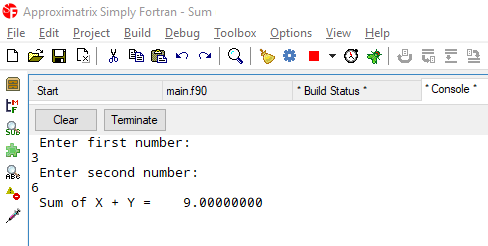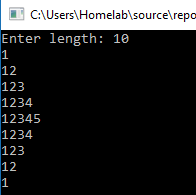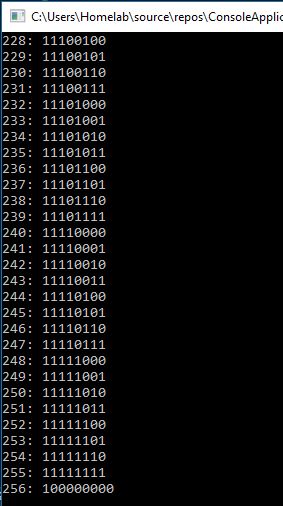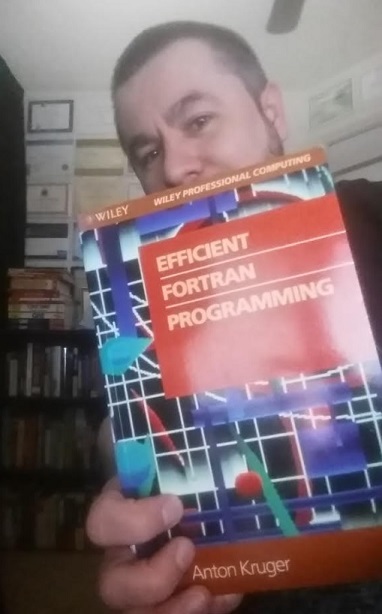#include "stdafx.h"
#include <iostream>
using namespace std;
int main()
{
int beginLetter = 65;
int letterCount = 6;
for (int i = 1; i <= letterCount; i++)
{
for (int j = 1; j <= i; j++)
{
cout << char(beginLetter);
beginLetter++;
}
cout << endl;
beginLetter = 65;
}
cin.get();
return 0;
}
Output
Notes
#include "stdafx.h"
#include <iostream>
using namespace std;
int main()
{
int beginLetter = 65;
int n;
cout << "Enter height: " << endl;
cin >> n;
for (int i = 1; i <= n; i++)
{
for (int j = 1; j <= i; j++)
{
cout << char(beginLetter);
beginLetter++;
}
cout << endl;
beginLetter = 65;
}
cin.get();
cin.get();
return 0;
}




